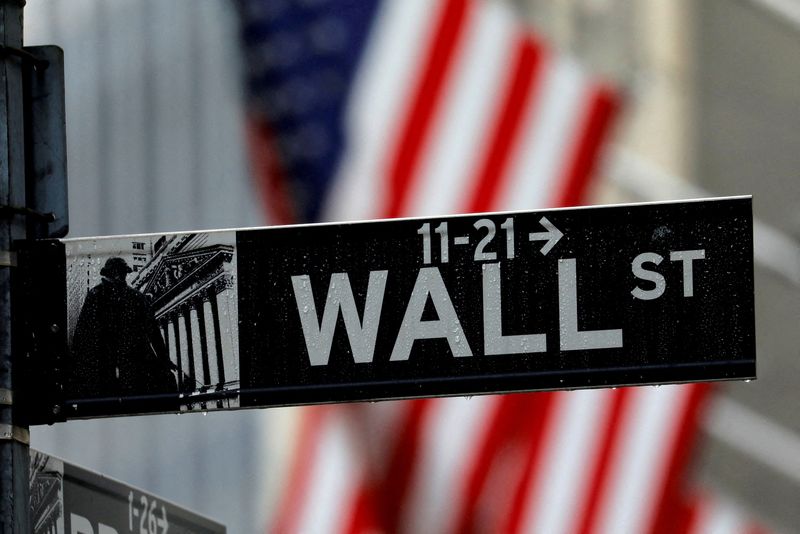This post was originally published on this site

Nasdaq Composite (IXIC) fell as much as 2.85% to return trading below the 14000 handle. This represents the biggest weekly decline since early March when the stock market bull rally started and saw the IXIC index gain over 30%.
Dow Jones Industrial Average (DJI) lost just 1.1% as selling was mostly taking place in the growth sector.
The July jobs report was out on Friday with the U.S. adding 187,000 jobs in the last month. The market will now turn its focus to the inflation data, namely Thursday’s CPI report and Friday’s PPI report.
“July CPI report will likely be another soft report and point to moderation. Headline CPI likely increased by 0.2% m/m resulting in the y/y rate increasing two-tenths to 3.2% as base effects are less favorable than last month. For core inflation, we forecast a strong 0.1% m/m and two-tenths decline in the y/y rate to 4.6%, lowest since Sept 2021,” Bank of America economist Shruti Mishra said in a note.
On the Fed front, this week’s schedule is relatively light with Harker and Bowman set to speak on Monday.
Q2 earnings season: Better than feared, worse than expected reactions
According to Bank of America’s data, 87% of S&P 500 companies reported Q2 earnings. The quarter beat by 2% vs. the consensus so far, which is -6% YoY.
“Sales beat by a lesser 1ppt, as cost cutting and margins drove the earnings surprise (true for all sectors but Health Care and Energy). 70%/60%/48% beat on EPS/sales/both vs. the average 58%/59%/40%,” BofA equity strategists said.
FactSet’s data shows that 79% of companies have reported actual EPS above the mean EPS estimate, which is above the 5-year average of 77% and above the 10-year average of 73%.
“Companies that have reported positive earnings surprises for Q2 2023 have seen an average price decrease of 0.5% two days before the earnings release through two days after the earnings release. This percentage decrease is well below the 5-year average price increase of 1.0% during this same window for companies reporting positive earnings surprises. In fact, if this is the final percentage for the quarter, it will mark the largest average negative price reaction to positive EPS surprises reported by S&P 500 companies for a quarter since Q2 2011 (-2.1%),” FactSet analysts wrote in a note.
Looking forward to this week, the key reporting companies include Eli Lilly (NYSE:LLY), UPS (NYSE:UPS), Walt Disney (NYSE:DIS), and Alibaba (NYSE:BABA).
What analysts are saying about U.S. stocks
Vital Knowledge analysts: “Our main complaint with the market remains valuation, both on an absolute basis and (especially) compared to Treasury yields. However, while valuation constraints will prevent a sustained rally above 4550-4600 for now, this issue alone won’t crush stocks given the supportive nature of fundamental news flow (which we envision will persist for the time being). As a result, we still have high conviction in a neutral bias.”
Sevens Report analysts: “The market remains largely priced for near perfection, and last week wasn’t perfect. And if that happens again this week, we should expect a further decline in the S&P 500. However, as long as the three pillars remain in place, then any pullback should be viewed as a decline in a still positively trending market.”
Oppenheimer analysts: “This week we reiterate the risk of a seasonal correction, and the longerterm positives that indicate such a setback should prove an opportunity to purchase a bull cycle in its middle innings. We show the S&P 500 typically bottoms in late August in a pre-election year, and into this time target, we believe the index becomes increasingly attractive toward 4,300.”
Wells Fargo analysts: “Valuations by almost any measure are stretched. We believe investors will have better opportunities to put money to work in the stock market over the course of the coming few quarters. We continue to call for patience.”
Citi analysts: “At current prices, we believe the market is pricing in free cash flow growth of roughly +10% annualized for the next five years. While this may seem lofty, it is not unusual when we look back 15+ years. Additionally, consensus bottomup estimates for the S&P 500 are materially higher than the top end of market-implied free cash flow projections. This supports a more constructive view on US equities.”

